
Akihiko Hoshide is a Japanese engineer, JAXA astronaut, and former commander of the International Space Station. On August 30, 2012, Hoshide became the third Japanese astronaut to walk in space.

Oleg Viktorovich Novitsky is a former Lieutenant Colonel in the Russian Air Force who logged over 700 hours of flight time and was awarded for bravery. He is currently serving as a Russian cosmonaut with Roscosmos and has participated in multiple expeditions, during which he has spent over 531 days in space.

Sergey Nikolayevich Ryzhikov, lieutenant colonel of Russian Air Force, is a Russian cosmonaut, selected in 2006. He is a veteran of two long duration space flights to the ISS.

Anton Nikolaevich Shkaplerov is a former Russian cosmonaut. He is a veteran of four spaceflights.

Thomas Gautier Pesquet is a French aerospace engineer, pilot, European Space Agency astronaut, actor and writer. Pesquet was selected by ESA as a candidate in May 2009, and he successfully completed his basic training in November 2010. From November 2016 to June 2017, Pesquet was part of Expedition 50 and Expedition 51 as a flight engineer. Pesquet returned to space in April 2021 on board the SpaceX Crew Dragon for a second six-month stay on the ISS.

Mark Thomas Vande Hei is a retired United States Army officer and current NASA astronaut who has served as a flight engineer for Expedition 53, 54, 64, 65, and 66 on the International Space Station.
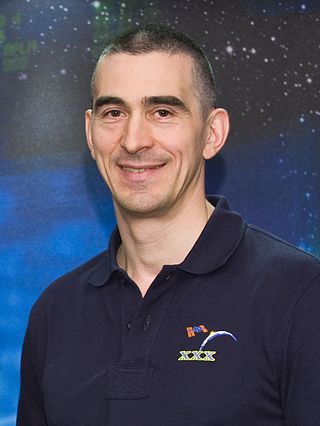
Anatoli Alekseyevich Ivanishin is a former Russian cosmonaut. His first visit to space was to the International Space Station on board the Soyuz TMA-22 spacecraft as an Expedition 29 / Expedition 30 crew member, launching in November 2011 and returning in April 2012. Ivanishin was the Commander of the International Space Station for Expedition 49.
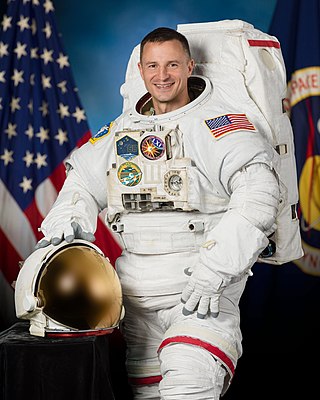
Andrew Richard "Drew" Morgan is a NASA astronaut from the class of 2013.
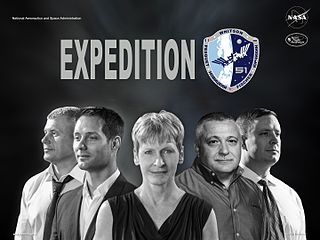
Expedition 51 was the 51st expedition to the International Space Station, which began upon the departure of Soyuz MS-02 on April 10, 2017, and concluded upon the departure of Soyuz MS-03 on June 2, 2017. Peggy Whitson, Oleg Novitskiy and Thomas Pesquet were transferred from Expedition 50, with Peggy Whitson taking the commander role. She is the first woman to command two expeditions to the ISS, having previously commanded Expedition 16.
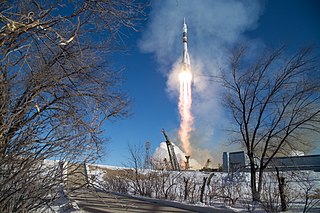
Soyuz MS-07 was a Soyuz spaceflight launched on 17 December 2017 at 07:21 UTC. It transported three members of the Expedition 54 crew to the International Space Station. Soyuz MS-07 was the 136th flight of a Soyuz spacecraft. The crew consisted of a Russian commander, Japanese doctor, and an American flight engineer.

Matthias Josef Maurer is a German ESA astronaut and Materials scientist, who was selected in 2015 to take part in space training.

Soyuz MS-17 was a Soyuz spaceflight that was launched on 14 October 2020. It transported three crew members of the Expedition 63/64 crew to the International Space Station. Soyuz MS-17 was the 145th crewed flight of a Soyuz spacecraft. The crew consisted of a Russian commander and a Russian and American flight engineer.

Expedition 65 was the 65th long duration expedition to the International Space Station. The mission began on 17 April 2021, with the departure of Soyuz MS-17, and was initially commanded by NASA astronaut Shannon Walker serving as the third female ISS commander, who launched in November 2020 aboard SpaceX Crew-1 alongside NASA astronauts Michael S. Hopkins and Victor J. Glover, as well as JAXA astronaut Soichi Noguchi. They were joined by the crew of Soyuz MS-18, which is made up of Russian cosmonauts Oleg Novitsky and Pyotr Dubrov, as well as NASA astronaut Mark Vande Hei.

Soyuz MS-18 was a Soyuz spaceflight that was launched on 9 April 2021 at 07:42:41 UTC. It transported three members of the Expedition 64 crew to the International Space Station (ISS). Soyuz MS-18 was the 146th crewed flight of a Soyuz spacecraft. The launching crew consisted of a Russian commander, a Russian flight engineer, and an American flight engineer of NASA. The spacecraft returned to Earth on 17 October 2021 following 191 days in space. The flight served as the landing vehicle for the Russian film director Klim Shipenko and actress Yulia Peresild who launched to the ISS aboard Soyuz MS-19 and spent twelve days in space in order to film a movie, Vyzov.

Soyuz MS-19 was a Soyuz spaceflight which launched on 5 October 2021, at 08:55:02 UTC. It was the 147th flight of a crewed Soyuz spacecraft. The launching crew consisted of Russian commander Anton Shkaplerov, Russian film director Klim Shipenko and Russian actress Yulia Peresild. Shipenko and Peresild spent about twelve days on the International Space Station before returning to Earth aboard Soyuz MS-18, while filming a movie in space, Vyzov. The MS-18 flight launched two crew members of the Expedition 66. Without an American astronaut, this launch marked the first time in more than 21 years that a Soyuz crew only included Russian cosmonauts and travelers and the ship had to be upgraded to be piloted by a single person at launch. This is also the first mission to the ISS with an entirely Russian crew.

Pyotr Valerievich Dubrov is a Russian engineer and cosmonaut selected by Roscosmos in 2012.

Expedition 67 was the 67th long-duration expedition to the International Space Station. The expedition began upon the departure of Soyuz MS-19 on 30 March 2022, with NASA astronaut Thomas Marshburn taking over as ISS commander. Initially, the expedition consisted of Marshburn and his three SpaceX Crew-3 crewmates Raja Chari, Kayla Barron and Matthias Maurer, as well as Roscosmos cosmonauts Oleg Artemyev, Denis Matveev and Sergey Korsakov, who launched aboard Soyuz MS-21 on March 18, 2022 and transferred from Expedition 66 alongside the Crew-3 astronauts. However, continued international collaboration has been thrown into doubt by the 2022 Russian invasion of Ukraine and related sanctions on Russia.
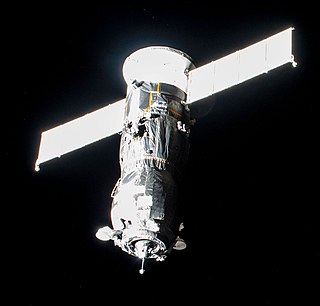
Progress MS-17, Russian production No. 446, identified by NASA as Progress 78P, was a Progress spaceflight operated by Roscosmos to resupply the International Space Station (ISS). This was the 169th flight of a Progress spacecraft.

SpaceX Crew-6 was the sixth crewed operational NASA Commercial Crew flight of a Crew Dragon spacecraft, and the ninth overall crewed orbital flight. The mission launched on 2 March 2023 at 05:34:14 UTC, and it successfully docked to the International Space Station (ISS) on 3 March 2023 at 06:40 UTC. The Crew-6 mission transported four crew members to the International Space Station (ISS). Two NASA astronauts, a United Arab Emirates astronaut, and a Russian cosmonaut were assigned to the mission. The two NASA astronauts are Stephen Bowen and Warren Hoburg. The cosmonaut, Andrey Fedyaev, was reassigned from Soyuz MS-23. Sultan Al Neyadi was the commander of the United Arab Emirates' mission on the flight.





























